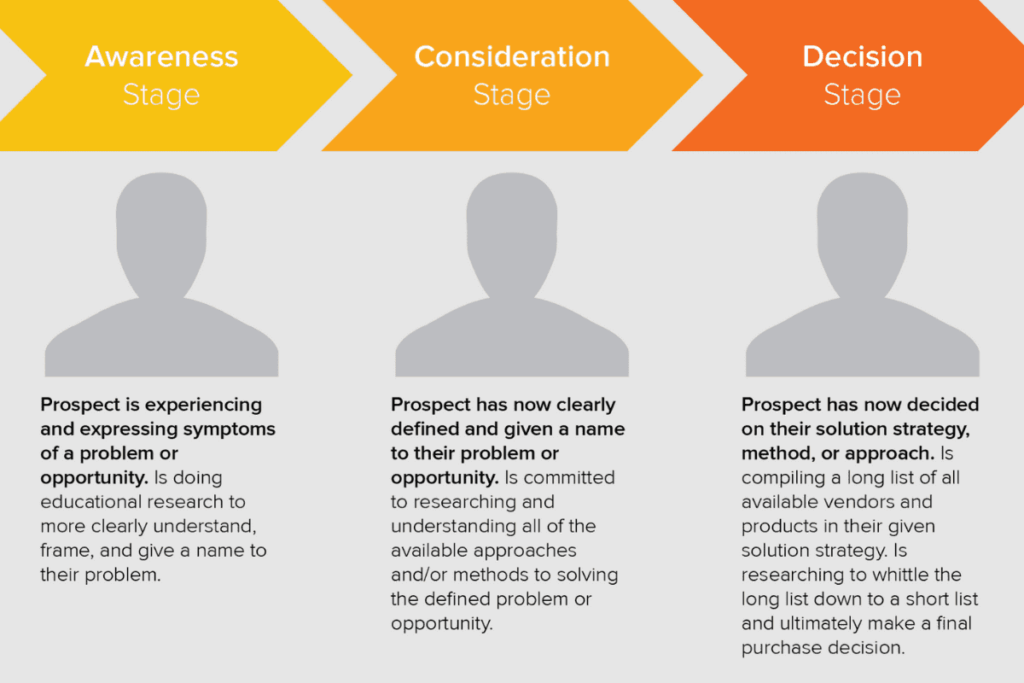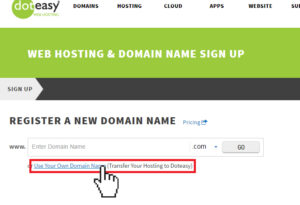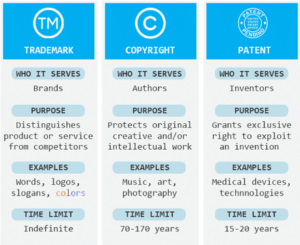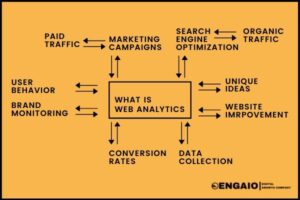Picture this: you’re strolling through a bustling marketplace, surrounded by colorful stalls and captivating aromas. As you navigate through the crowd, you come across a vendor who catches your eye. They beckon you over with a warm smile, offering you a sample of their delectable creation. Intrigued, you take a bite, and instantly, you’re transported to a world of flavor and delight. That, my friend, is the power of the customer journey.
In the realm of digital marketing, understanding the customer journey is like uncovering the secret recipe for success. It’s the process through which a customer interacts with your brand, from the very first touchpoint to the final purchase and beyond. So, why is the customer journey important for digital marketing, you ask? Well, dear reader, grab a cup of coffee, sit back, and let me enlighten you on this captivating topic.
The customer journey is crucial for digital marketing because it helps businesses understand and optimize the entire process of attracting and converting customers. By mapping out each touchpoint and interaction, marketers can identify pain points, improve user experience, and tailor their strategies to meet customer needs. This leads to higher customer satisfaction, increased brand loyalty, and ultimately, improved business performance. The customer journey is a valuable tool for optimizing digital marketing efforts and driving success.
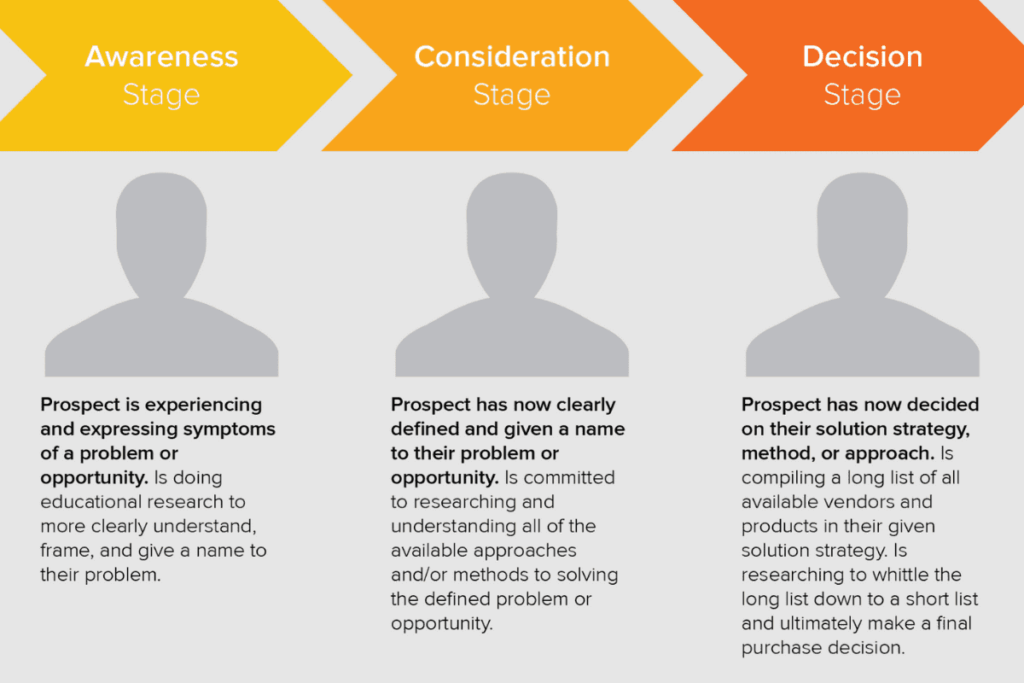
Why is the Customer Journey Important for Digital Marketing?
The customer journey refers to the process that a customer goes through when interacting with a brand or business. It encompasses every touchpoint and interaction that a customer has, from the initial awareness stage to the final purchase and beyond. In the digital age, where consumers have access to an abundance of information and options, understanding and optimizing the customer journey is crucial for successful digital marketing strategies.
One of the main reasons why the customer journey is important for digital marketing is that it allows businesses to gain valuable insights into their customers’ behaviors, preferences, and needs. By tracking and analyzing the customer journey, businesses can identify pain points, bottlenecks, and areas for improvement. This information can then be used to enhance the overall customer experience and tailor marketing efforts to better meet customers’ expectations.
The Awareness Stage
The awareness stage is the first phase of the customer journey, where potential customers become aware of a brand or a specific product or service. During this stage, customers may come across a brand through various channels, such as social media, search engines, or online ads. It is crucial for businesses to create a strong first impression and capture the attention of potential customers at this stage.
One way to do this is by implementing effective SEO (search engine optimization) strategies to ensure that the brand appears prominently in search engine results. Additionally, creating engaging and informative content that addresses customers’ pain points and provides value can help establish the brand as a trusted authority in its industry. By focusing on building awareness and generating interest, businesses can attract a larger pool of potential customers and increase their chances of conversion.
The Consideration Stage
The consideration stage is when potential customers start evaluating different options and comparing brands or products. During this stage, it is essential for businesses to provide relevant and compelling information that helps customers make informed decisions. This can be done through content marketing, such as blog posts, videos, or case studies, that highlight the unique selling points and benefits of the brand or product.
Furthermore, businesses can leverage social proof and customer testimonials to build trust and credibility. Positive reviews and testimonials from satisfied customers can significantly influence a potential customer’s decision-making process. By focusing on providing valuable information and addressing potential objections, businesses can increase their chances of converting leads into customers.
The Conversion Stage
The conversion stage is where potential customers make the final decision to purchase from a specific brand. This stage is crucial for businesses, as it represents the culmination of their marketing efforts. To encourage conversions, businesses should optimize their website and create a seamless and user-friendly purchasing process.
Additionally, implementing effective call-to-action strategies and providing incentives, such as discounts or free shipping, can help motivate potential customers to take the final step. By removing any barriers or friction points in the conversion process, businesses can increase their conversion rates and drive revenue.
Benefits of Understanding the Customer Journey for Digital Marketing
Understanding the customer journey is not only beneficial for individual marketing campaigns but also for long-term business success. By gaining insights into customers’ behaviors and preferences, businesses can:
- Improve customer satisfaction and loyalty by addressing pain points and delivering a personalized experience
- Optimize marketing efforts by targeting the right audience with the right message at the right time
- Identify opportunities for upselling and cross-selling
- Enhance customer retention and reduce churn rates
- Gain a competitive advantage by differentiating from competitors
By continuously monitoring and analyzing the customer journey, businesses can adapt their strategies and tactics to meet the evolving needs and expectations of their customers. This iterative approach allows for continuous improvement and ensures that businesses stay ahead in the ever-changing digital landscape.
Conclusion:
The customer journey is a fundamental aspect of digital marketing. By understanding and optimizing the customer journey, businesses can enhance the overall customer experience, increase conversions, and drive long-term success. From the awareness stage to the conversion stage, each phase plays a crucial role in guiding customers towards making a purchase decision. By implementing effective strategies and providing valuable information at each stage, businesses can build strong relationships with their customers and achieve their marketing objectives.
Key Takeaways: Why is the Customer Journey Important for Digital Marketing?
- The customer journey is the path that customers take from their initial awareness of a product or service to their final decision to purchase.
- Understanding the customer journey allows marketers to tailor their digital marketing strategies to meet the specific needs and preferences of their target audience.
- By mapping out the customer journey, marketers can identify touchpoints where they can engage and interact with customers, providing valuable information and building relationships.
- The customer journey helps marketers identify any gaps or pain points in the buying process, allowing them to make improvements and enhance the overall customer experience.
- By analyzing the customer journey, marketers can gain insights into customer behavior, preferences, and motivations, which can inform future marketing strategies and campaigns.
Frequently Asked Questions
What is the customer journey in digital marketing?
The customer journey in digital marketing refers to the path that a customer takes from the initial awareness of a product or service to the final purchase and beyond. It includes all the touchpoints and interactions that a customer has with a brand, both online and offline. The customer journey can be divided into different stages, such as awareness, consideration, decision, and retention.
Understanding the customer journey is crucial for digital marketers as it allows them to identify the key moments and touchpoints where they can engage and influence customers. By mapping out the customer journey, marketers can create targeted and personalized marketing campaigns that resonate with customers at each stage of their journey.
Why is the customer journey important for digital marketing?
The customer journey is important for digital marketing because it provides valuable insights into customer behavior, preferences, and needs. By understanding how customers move through the different stages of their journey, marketers can optimize their marketing strategies and tactics to better meet customer expectations and drive conversion.
Moreover, the customer journey helps marketers identify potential gaps or pain points in the customer experience. By addressing these gaps and delivering a seamless and personalized experience, marketers can enhance customer satisfaction and loyalty, leading to increased customer lifetime value and business growth.
How does the customer journey impact digital marketing strategies?
The customer journey has a significant impact on digital marketing strategies. By mapping out the customer journey, marketers can identify the most effective channels, messages, and tactics to engage and convert customers at each stage of their journey.
For example, during the awareness stage, marketers can leverage content marketing and social media advertising to increase brand awareness and attract potential customers. In the consideration stage, targeted email campaigns and retargeting ads can help nurture leads and drive them towards making a purchase decision. By aligning marketing efforts with the customer journey, marketers can optimize their budget and resources to achieve maximum impact and ROI.
How can digital marketers map the customer journey?
Digital marketers can map the customer journey by conducting research, analyzing data, and gathering customer insights. This process involves understanding the different touchpoints and interactions that customers have with a brand, as well as the emotions and motivations that drive their decision-making.
Marketers can use tools such as customer surveys, web analytics, and social listening to gather data on customer behavior and preferences. They can also create buyer personas and customer journey maps to visualize the customer journey and identify opportunities for improvement. By continuously monitoring and analyzing the customer journey, marketers can adapt their strategies and tactics to better meet customer needs and expectations.
What are the benefits of optimizing the customer journey in digital marketing?
Optimizing the customer journey in digital marketing offers several benefits. Firstly, it allows marketers to deliver a personalized and seamless customer experience, which can lead to increased customer satisfaction, loyalty, and advocacy.
Secondly, optimizing the customer journey helps marketers improve conversion rates and drive revenue growth. By identifying and addressing conversion barriers at each stage of the customer journey, marketers can increase the likelihood of customers taking the desired action, whether it’s making a purchase, subscribing to a service, or signing up for a newsletter.
Lastly, optimizing the customer journey enables marketers to gain a competitive advantage. By understanding their customers’ needs and preferences better than their competitors, marketers can develop innovative and differentiated marketing strategies that resonate with their target audience, ultimately driving market share and business success.
The 8 Steps To Creating A Customer Journey Map
Final Summary: The Importance of the Customer Journey in Digital Marketing
In today’s digital landscape, the customer journey holds immense importance for successful marketing strategies. It is not just a linear path from awareness to purchase; it is a dynamic and complex process that requires careful understanding and optimization. By analyzing and optimizing the customer journey, businesses can make informed decisions and tailor their marketing efforts to meet the needs and preferences of their target audience.
Understanding the customer journey allows marketers to identify pain points and opportunities for engagement at every stage. By leveraging this knowledge, businesses can create personalized and targeted experiences that resonate with their potential customers. From the initial touchpoints that grab attention to the post-purchase support that fosters loyalty, the customer journey provides valuable insights into optimizing each interaction.
By optimizing the customer journey, businesses can drive better results and improve their return on investment. It allows marketers to allocate resources more effectively, focusing on strategies that have proven to be successful at each stage of the journey. By delivering the right message to the right audience at the right time, businesses can enhance brand awareness, increase conversions, and foster long-term customer relationships.
In conclusion, the customer journey is a crucial aspect of digital marketing. It provides valuable insights into customer behavior, preferences, and pain points, allowing businesses to create personalized and impactful experiences. By optimizing the customer journey, businesses can drive better results and achieve their marketing goals. So, embrace the power of the customer journey and unlock the true potential of your digital marketing efforts.

